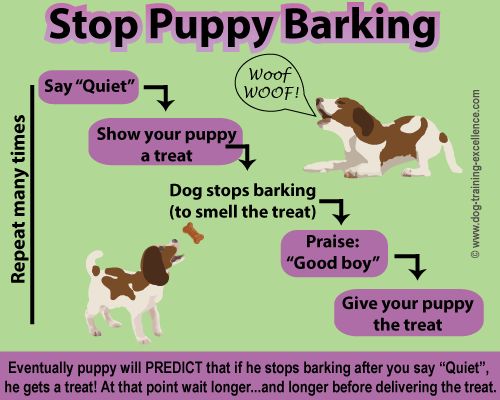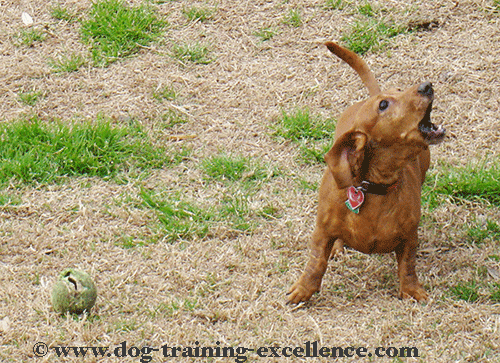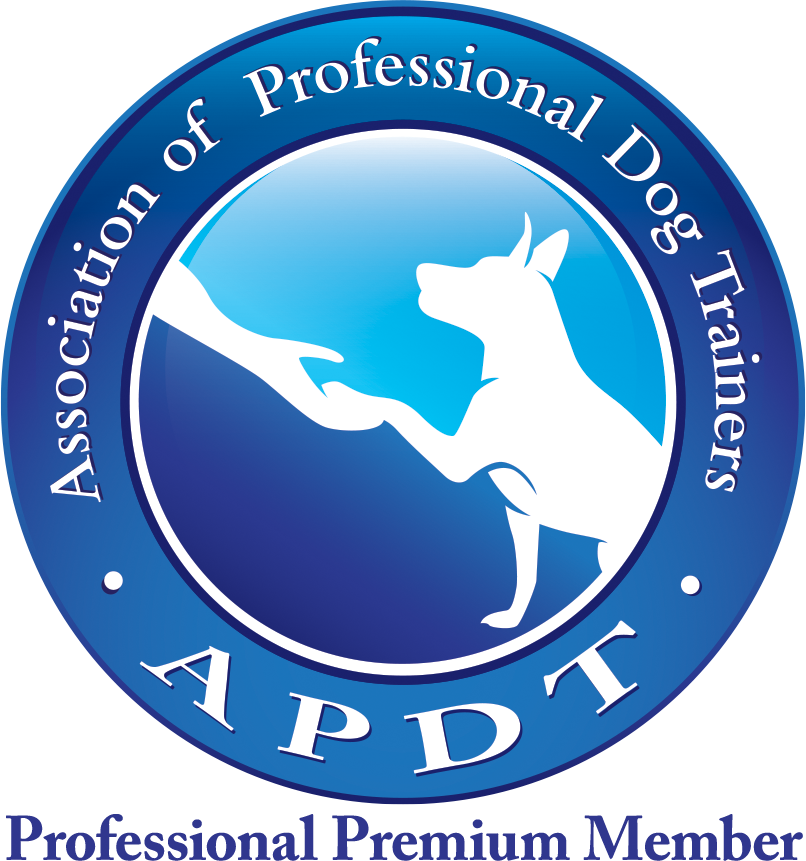I try to write my posts as unbiased as possible and recommend the products I consider to be useful and the best. I use affiliate links, this means that–at no extra cost to you–I can make a commission on a purchase you make after clicking on them. As an Amazon Associate I earn from qualifying purchases.
Why is my puppy barking and
how do I stop it?
Puppy barking is a normal dog behavior but when it becomes excessive, to the point that everyone in the household is stressed, it must stop. The good news is that your pooch is ready to start learning some basic commands.
“Speak/Quiet” are two great ones to begin training at a young age, specially if your fur ball is already barking a lot. Keep in mind though that dog barking is a way of communication and you should never punish it.
Puppies can be trained as early as the day you adopt them, which should be between 7-8 weeks or older.
This page will guide you step by step on how to stop puppies barking. You can then keep on learning about dog behavior and training to ensure your pup grows up to be your best friend.
To help your new puppy adapt well to the new home and reduce stress barking provide the following:
- A comfortable sleeping area, if possible near you or another family member. You can also choose to let your puppy sleep in a crate. Even better, provide your pooch with a doggy bed in each important room of your house. For example: the living room, your bedroom and your work room.
- Plenty of playtime during the day and potty breaks at least every 2-3 hours.
- Lots of chew toys (rotate them every 2-3 days to make them last longer and keep your hound interested).
- Take your canine friend to a puppy socialization or training class.
- Follow your vet’s advice on diet and vaccination.
Stop puppy barking step-by-step guide: Add a command!
Step 1: Find out WHAT is making your puppy bark. Does he bark during the day or at night? does he bark at people out the window or to you inside the house? Take notes and find a pattern to figure out the trigger.
Step 2: Use the trigger to train your hound the command “Speak”. Ideally you will be able to control at least one of the barking triggers. For example, if your puppy barks every time someone walks outside the house, then have someone walking outside the house at your request. Have a cell phone on speaker to communicate with your friend (ask him/her to remain quiet on the other side of the line), then say the command “Speak” out loud. Your friend should walk by your house immediately after he hears the cue. The person walking by will trigger your pooch to bark.
Step 3: Praise your puppy for such good barking! Do not use treats at this point, a marker word or praise should be enough.
Step 4: While your dog is still barking, say the command “Quiet!”. Immediately afterwards bring out a yummy treat and show it to your barking pappy. It will most likely stop the noise because he will want to smell it. As soon as he is quiet praise him and let him have the treat.
 |
A great tool to use with your puppy: a remote trainer. This machines can be used to train your dog at a distance and also to teach your puppy to be alone without much barking. They use rewards only! |
Step 5: Repeat steps 2-4 10-20 times fro several days. However, you will slightly change the timing of the events. For example, you will want your furry friend to remain quiet for longer than just a few second. To accomplish this you need to start delaying the delivery of the treat. You can also teach your hound the concept of “You are free”, which means the dog must continue doing the command until released.
Step 6: To test if your dog has learned the commands, you can say “speak” without having your friend walking outside your house. If your puppy barks praise him! If he doesn’t, keep training.
Step 7: Once your pooch responds to the “bark/quiet” commands, it is time to make this commands reliable. To do this try them at different times of the day and different locations. Importantly, you can now train your puppy to bark only at appropriate times. To do this, ask him to bark (speak) when the moment is fitting. What is that? It is up to you to decide when you would like your pooch to alert you. Maybe when someone walks up your front lawn? The same idea when using the quiet command, use it to teach your pooch when it is NOT appropriate to be loud.
Step 8: If something triggers your puppy to bark incessantly and the quiet command is not working, gently remove your dog from that situation. Then set up a similar situation, but with the trigger much further away so your pup can respond to your command better. The dog training methods systematic desensitization and counter conditioning are very useful in these cases.
With a lot of practice and patience you will have a puppy that barks only when you ask and becomes quiet on command.
Step 9: If you feel training your puppy dog to stop barking is not going so well, consider the use of homeopathy remedies. These are harmless to your puppy and for best results, should be used alongside a training program (like the ones described here). PetAlive has a variety of really good products and a superb customer service.
Stop puppy barking step-by-step guide: Detective work!
Sometimes teaching the speak/quiet commands to your pooch is not enough. This often happens when puppies are barking because they are home alone or the stress is too high.
Like any dog barking problem the first step is to figure out WHY your puppy is barking incessantly. You might need to set up a webcam if your dog only barks when you are not around. Like a detective, your jobs is to find out what is making your pooch woof.
Below is a list of the most common dog barking problems and the link will take you to the appropriate solution guide.
- Puppy barking to alert: You puppy is trying to tell you an intruder is nearby! Don’t ignore him or he will get even more frustrated.
- Stress and anxiety barking: stress and anxiety are common causes of barking, learn how to help your hound gain confidence and relax.
- Bored barking: The title says it all, your puppy needs more attention, playtime, stimulation and walks.
- Trained barking: In this case something is making your mongrel bark and, accidentally or not, his barking makes that “thing” go away. This means that his barking “works!” and he will keep on doing it unless untrained.
- Fear barking: This is more likely to happen when you are on walks with your pup and something scares him. Always take your puppy away from a situation like this, do not push him to confront it.
- Attention barking: Many puppies will learn that if they bark, someone will come to give them attention!
- Excited barking: You puppy is simply too excited to meet everyone! And he shows it through his mouth! Self-control exercises will be useful in this case.
If you have questions or stories to share, please leave them on the comments box below or fill out the following form.
Home > Training a Puppy Dog > Stop Puppy Barking






New! Comments
Questions? Anecdotes? Tips? Leave me a comment in the box below.